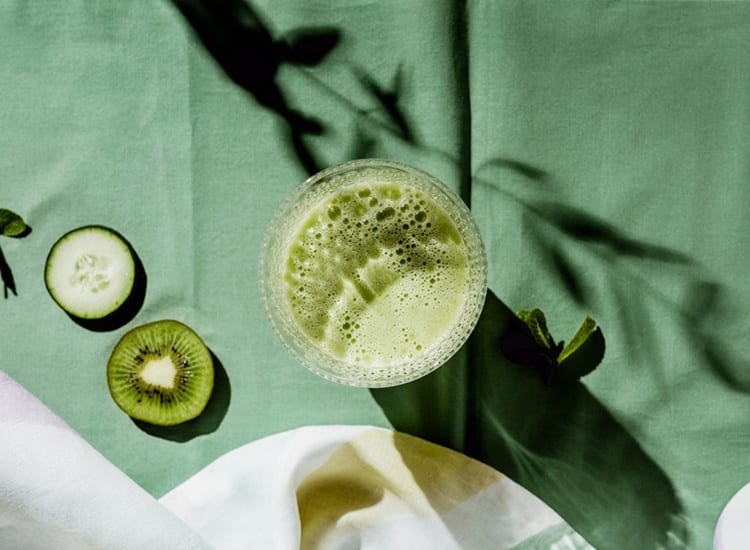Clean 21: 21 Day Detox
Our Signature 21-Day Full-Body Reset
Questions? Ask about this product
Free Shipping On Orders Over $50
Complementary products

 Have you ever wondered what makes an orange – orange? Or what gives broccoli such a sharp odor and flavor? In addition to vitamins and minerals, fruits and veggies contain thousands of natural chemicals that give plant foods their unique colors, smells, and tastes. These chemicals are called phytonutrients, and they offer a variety of health benefits to people who eat those plants. In addition to a healthy clean diet, our favorite way to boost phytonutrient content is adding a scoop of our Greens Powder to smoothies or water.
Have you ever wondered what makes an orange – orange? Or what gives broccoli such a sharp odor and flavor? In addition to vitamins and minerals, fruits and veggies contain thousands of natural chemicals that give plant foods their unique colors, smells, and tastes. These chemicals are called phytonutrients, and they offer a variety of health benefits to people who eat those plants. In addition to a healthy clean diet, our favorite way to boost phytonutrient content is adding a scoop of our Greens Powder to smoothies or water.
Phytonutrients, also called phytochemicals, are compounds produced by plants to keep them safe from threats in nature. It can be helpful to think of phytonutrients as a plant’s immune system. Humans have white blood cells that seek out and destroy disease-causing organisms; plants have phytonutrients to help them do the same.
In addition to protection, phytonutrients are responsible for giving plants their pigment, like the beautiful red of a pomegranate or the vibrant orange of a carrot. Many foods rich in phytonutrients are deep hued, while others don’t have much color at all. For example, onions and garlic are bursting with allyl sulfides, which are so beneficial. Phytonutrients are also found in whole grains, nuts and seeds, legumes, and tea.
Phytonutrients aren’t responsible for keeping us alive, but eating even trace amounts may help keep our bodies working properly and promote longevity. After all, humans are exposed to the same environmental dangers as plants – pollution, toxins, predator pests, and ultraviolet radiation from the sun. It makes sense that we also need phytonutrients to protect us.
There are so many health benefits to eating plants rich in phytonutrients. Research suggests that consuming foods with polyphenols, including cacao and green tea, may reduce the risk of cardiovascular disease. Polyphenols have been studied extensively and are also associated with lowering blood pressure, reducing inflammation, and increasing HDL (good) cholesterol. Meanwhile, isothiocyanate, a phytonutrient found in cruciferous vegetables like broccoli, cabbage, and cauliflower, has been linked to a decreased risk of prostate, lung, breast, and colon cancers.
Carotenoids are another important phytonutrient. These compounds, which give foods like peppers and carrots their yellow, orange, and red pigments, are powerful antioxidants, combating harmful free radicals that cause tissue damage in the body. Hesperidin, another antioxidant found in citrus fruits like oranges and lemons, reduces inflammation in the body to help prevent chronic disease. Exciting research suggests that ellagic acid, a phytonutrient found in berries and nuts, may slow the growth of cancer cells.
A simple way to consume more phytonutrients is to focus on getting as many colors on your plate or in your Daily Shake as possible. Berries, kale, pomegranate, and watermelon are brimming with phytonutrients and make great smoothie add-ins. For lunch, scoop a serving of whole grains into your salad, like wild rice or quinoa.
Another easy way to get more phytonutrients is to drink tea instead of coffee. Green tea is full of flavonoids that protect our cells from oxidative damage by eliminating free radicals. You can also add a pinch of turmeric to your morning cup of hot lemon water. It’s rich in curcumin, an anti-inflammatory agent that helps the body rid itself of toxins. If you’re someone who can tolerate dairy off the 21-Day Clean Program, it’s important to note that milk, cheese, yogurt, and other lactose products can block the absorption of phytonutrients.
Sticking to a healthy diet rich in leafy greens, fresh fruits, and whole grains is the best way to soak in all of the phytonutrients nature has to offer.
Written by Kate Kasbee
If you enjoyed this article, you might also like 5 Recommended Daily Supplements for a Lifestylestyle